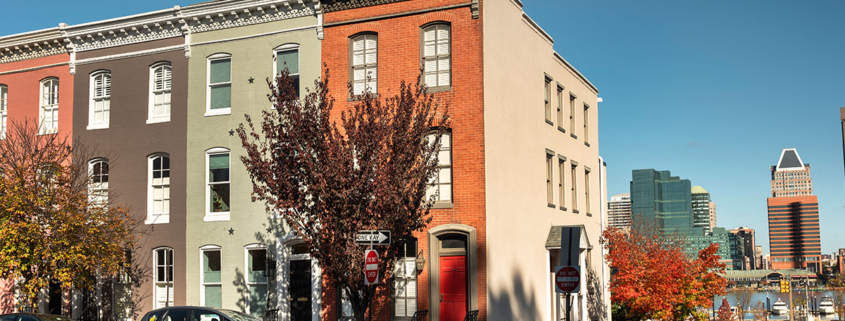Rehabbing Historic Maryland Buildings with Tax Credits
By Shawn Marsden, Manager
For Marylanders and Maryland companies who own a historic property in Maryland and want to restore it, the Maryland Historic Revitalization Tax Credit offers financial help to rehabilitate certified historic buildings. The program aims to keep the state’s history alive and boost local economies by turning old, unused buildings into vibrant spaces again.
The program, part of the Maryland Historic Trust (MHT), consists of three different tax credits: homeowner tax credit, small commercial tax credit, and competitive commercial tax credit. These tax credits may be used for projects that return a structure to a state of utility through repair or alteration, creating an efficient use while preserving portions and features of the structure, site and environment that are historically, architecturally, or culturally significant.
For a building to qualify for these credits, it must be a certified historic structure, defined as having at least one of the following designations:
- Individually listed in the National Register of Historic Places
- A contributing resource within a National Register Historic District
- A locally designated structure or contributing resource within a local historic district that MHT determines to be eligible for the National Register
Homeowner tax credit: The homeowner tax credit is for owner-occupied historic homes. Homeowners are potentially eligible for a state income tax credit equal to 20 percent of qualified rehabilitation expenditures.
To qualify for the homeowner tax credit, homeowners need to meet these main criteria:
- They must live in this home as their primary residence.
- The credit is capped at $50,000 in a 24-month period and projects must have a minimum of $5,000 of eligible expenses to qualify.
- The building must be a single-family, owner-occupied residence.
There is no household income threshold in order to qualify for this credit.
The small commercial tax credit: This so-called “Main Street” rehab tax credit is designed for smaller commercial rehabilitations, defined as projects that do not exceed $500,000 in total qualified rehabilitation expenses. Eligible projects may earn a state income tax credit equal to 20 percent of qualified rehabilitation expenditures. The credit is capped at $50,000 in a 24-month period and must have a minimum of $5,000 of eligible expenses to qualify. This program is capped at $2 million worth of tax credits for FY2025.
To be eligible for the tax credit, a building must be at least one of the following:
- Be primarily income-producing
- Be rehabilitated as part of a development project to be sold to a homeowner
- Meet the “Targeted Project” criteria as an agricultural building or post-WWII building
Credits are available on a first-come, first-serve rolling basis. MHT is currently accepting applications for the small commercial tax credit.
Competitive commercial tax credit: This credit allows owners of income-producing properties the opportunity to earn a state income tax credit that is equal to 20 percent of eligible rehabilitation expenses for substantial rehabilitation projects. Substantial rehabilitation projects are defined as projects with eligible expenses that exceed the greater of the adjusted basis value of the structure or $25,000. $20,000,000 has been appropriated for this year’s competitive commercial tax credit; applications are due by August 31, 2024.
For all three tax credits, all aspects of a project and application must be reviewed and approved by The Maryland Historical Trust (MHT) prior to beginning work. Any work started and/or completed prior to approval is not eligible for the credit and may jeopardize the credit for the entire project.
Additional information about the credits, including application forms and description of eligible projects, can be found on the MHT website at https://mht.maryland.gov/Pages/funding/tax-credits.aspx
The tax professionals at Dembo Jones can help you understand the requirements for these tax credits. Give us a call to begin exploring these opportunities.
